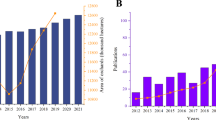Abstract
In order to explore the relationship between the welding process and welded quality, a multiple sensor fusion system was built to obtain the photodiode and visible light information during the welding. Features of keyhole, plasma and spatters were extracted from five sensors, including two photodiode sensors, one spectrometer sensor, one ultraviolet and visible light sensing camera and one auxiliary illumination sensing camera, 15 features were analyzed by normalization and principle component analysis, and principle component numbers was chosen as input parameters of support vector machine classification, Three weld quality types were defined according to the weld seam width and weld depth. The overall accuracy of training data was 98%, and the overall accuracy of testing data was 91%, respectively. Experimental results showed that the estimation on welding status was accurate and effective, thus providing an experimental example of monitoring high-power disk laser welding quality.








Similar content being viewed by others
References
Ai, Y., Shao, X., Jiang, P., Li, P., Liu, Y., & Yue, C. (2015). Process modeling and parameter optimization using radial basis function neural network and genetic algorithm for laser welding of dissimilar materials. Applied Physics A, 121, 555–569.
Chandrasekhar, N., Vasudevan, M., Bhaduri, A. K., & Jayakumar, T. (2015). Intelligent modeling for estimating weld bead width and depth of penetration from infra-red thermal images of the weld pool. Journal of Intelligent Manufacturing, 26, 59–71.
Chen, H. C., Bi, G., Lee, B. Y., & Cheng, C. K. (2016). Laser welding of CP Ti to stainless steel with different temporal pulse shapes. Journal of Materials Processing Technology, 231, 58–65.
Chen, Q., Tang, X., Lu, F., Luo, Y., & Cui, H. (2015). Study on the effect of laser-induced plasma plume on penetration in fiber laser welding under subatmospheric pressure. International Journal of Advanced Manufacturing Technology, 78, 331–339.
Gao, X. D., Mo, L., Xiao, Z., Chen, X., & Katayama, S. (2016). Seam tracking based on Kalman filtering of micro-gap weld using magneto-optical image. International Journal of Advanced Manufacturing Technology, 83, 21–32.
Gao, X. D., Wen, Q., & Katayama, S. (2013). Analysis of high-power disk laser welding stability based on classification of plume and spatter characteristics. Transactions of Nonferrous Metals Society of China, 23, 3748–3757.
Gao, X. D., Zhen, R. H., Xiao, Z. L., & Katayama, S. (2015). Modeling for detecting micro-gap weld based on magneto-optical imaging. Journal of Manufacturing Systems, 37, 193–200.
He, K. F., & Li, X. J. (2016). A quantitative estimation technique for welding quality using local mean decomposition and support vector machine. Journal of Intelligent Manufacturing, 27, 525–533.
Huang, W., & Kovacevic, R. (2011). A neural network and multiple regression method for the characterization of the depth of weld penetration in laser welding based on acoustic signatures. Journal of Intelligent Manufacturing, 22, 131–143.
Kawahito, Y., Matsumoto, N., Abe, Y., & Katayama, S. (2011). Relationship of laser absorption to keyhole behavior in high power fiber laser welding of stainless steel and aluminum alloy. Journal of Materials Processing Technology, 211, 1563–1568.
Li, S., Chen, G., Katayama, S., & Zhang, Y. (2014). Relationship between spatter formation and dynamic molten poolduring high-power deep-penetration laser welding. Applied Surface Science, 303, 481–488.
Luo, Y., Tang, X., Deng, S., Lu, F., Chen, Q., & Cui, H. (2016). Dynamic coupling between molten pool and metallic vapor ejection for fiber laser welding under subatmospheric pressure. Journal of Materials Processing Technology, 229, 431–438.
Scholkopf, B., Sung, K.-K., Burges, C. J. C., Girosi, F., Niyogi, P., Poggio, T., et al. (1997). Comparing support vector machines with Gaussian Kernels to radial basis function classifiers. IEEE Transactions on Signal Processing, 45(11), 2758–2765.
Shanmugam, N. S., Buvanashekaran, G., & Sankaranarayanasamy, K. (2010). Experimental investigation and finite element simulation of laser beam welding of AISI 304 stainless steel sheet. Experimental Techniques, 9–10, 25–36.
Shayganmanesh, M., & Khoshnoud, A. (2016). Investigation of laser parameters in silicon pulsed laser conduction welding. Lasers in Manufacturing and Materials Processing, 3, 50–66.
Wan, X. D., Wang, Y. X., & Zhao, D. W. (2016). Quality monitoring based on dynamic resistance and principal component analysis in small scale resistance spot welding process. International Journal of Advanced Manufacturing Technology. doi:10.1007/s00170-016-8374-1.
You, D. Y., Gao, X. D., & Katayama, S. (2013). Multiple-optics sensing of high-brightness disk laser welding process. NDT&E International, 60, 32–39.
You, D. Y., Gao, X. D., & Katayama, S. (2016). Data-driven based analyzing and modeling of MIMO laser welding process by integration of six advanced sensors. International Journal of Advanced Manufacturing Technology, 82, 1127–1139.
Zhang, Y. X., Gao, X. D., & Katayama, S. (2015). Weld appearance prediction with BP neural network improved by genetic algorithm during disk laser welding. Journal of Manufacturing Systems, 34, 53–59.
Acknowledgements
This work was partly supported by the National Natural Science Foundation of China (51675104), the Science and Technology Planning Public and Construction Project of Guangdong Province, China (Grant No. 2016A010102015), the Research Fund Program of Guangdong Provincial Key Laboratory of Computer Integrated Manufacturing (Grant No. CIMSOF2016008), and the Science and Technology Planning Project of Foshan, China (Grant No. 2014AG10015). Many thanks are given to Katayama Laboratory of Osaka University, for their assistance of laser welding experiments.
Author information
Authors and Affiliations
Corresponding author
Rights and permissions
About this article
Cite this article
Liu, G., Gao, X., You, D. et al. Prediction of high power laser welding status based on PCA and SVM classification of multiple sensors. J Intell Manuf 30, 821–832 (2019). https://doi.org/10.1007/s10845-016-1286-y
Received:
Accepted:
Published:
Issue Date:
DOI: https://doi.org/10.1007/s10845-016-1286-y




